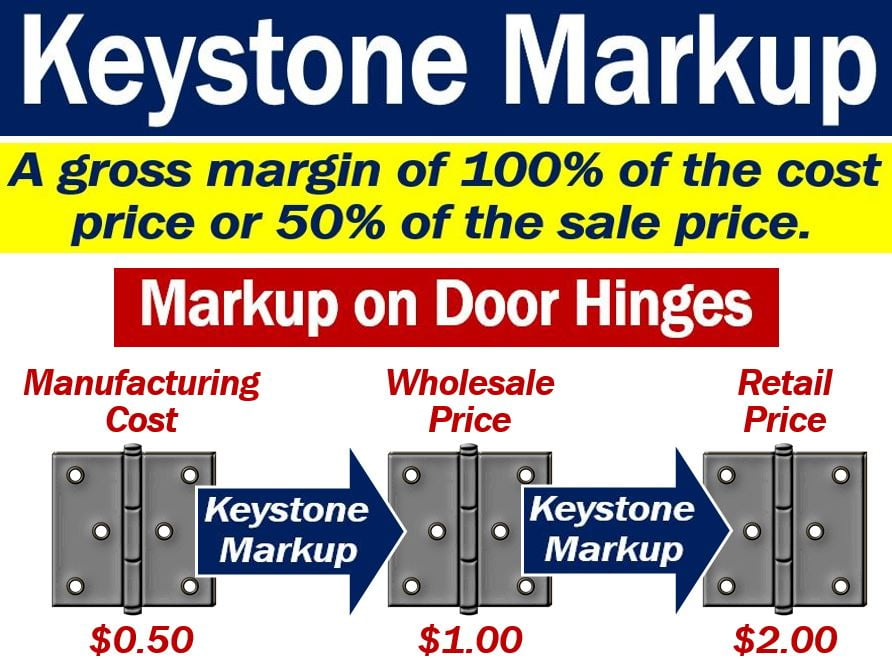Keystone markup – definition and meaning
Keystone markup or keystone pricing refers to selling something at double its wholesale price or its cost. In other words, a keystone markup occurs when there is a gross margin of 100 percent of the cost price. Alternatively, the markup is fifty percent of the sale price. Any product that a retailer, for example, sells at twice the amount it paid for it, has a keystone markup.
Markup is the difference between what you paid for something (wholesale price) and what you sold it for (retail price).
Keystone markup means that if a product’s cost is $100, then the seller sets its sale price at $200. We can also say that the product has a gross margin of $100.
Gross margin, in this context, is the difference between a product’s cost and its sale price.
The word ‘cost,’ for example for a retailer, means how much he or she paid for something that is on sale.
BusinessDictionary.com says the following regarding the term:
“Gross margin that is 100 percent of the cost price or 50 percent of the sale price. Any item selling at twice the price for what it was bought or produced is said to have a keystone markup.”

Keystone markup
The term consists of the two words, i.e., ‘keystone’ and ‘markup.’
Keystone
The word ‘keystone’ is a wedge-shaped piece of the crown of an arch that holds the whole structure together. It is also something on which associated things rely on for support.
In biology, a keystone species is a species that has a major impact on its ecosystem.
Markup
The word ‘markup’ is the amount the seller adds to the cost price of a product to cover overheads and profit.
Markup is also the process or result of correcting text when preparing it for printing. This article just focuses on markup’s cost-price meaning.
When you put the two words together, ‘markup’ retains its meaning, but the meaning of ‘keystone’ changes.
Prices must be competitive
While ‘keystone markup’ may sound like the seller is over-pricing the product, the item’s cost does not include overheads or selling costs.
Depending on the industry, sellers may need to adjust the markup lower or higher. Above all, they must keep their prices competitive.
Calculating the cost
When retailers buy goods and then sell them, they must include the cost of buying them plus delivery costs.
Manufacturers of goods should include the cost of raw materials plus their production costs.
For example, let’s suppose you have a hardware store and you sell door hinges. If you pay $1 per hinge plus 5 cents for delivery (shipping), your total cost is $1.05.
If you sell the door hinge for $2.10, there is a gross margin of 100%. In other words, the door hinge has a keystone margin.
Video – Keystone markup and other terms
In this Creative Live video, Megan Auman talks about the retail industry and basic markup terms.
For example, ‘Keystone’ means cost times two. However, ‘key and-a-half’ equals cost times 2.5, while ‘triple key’ equals cost times three.

